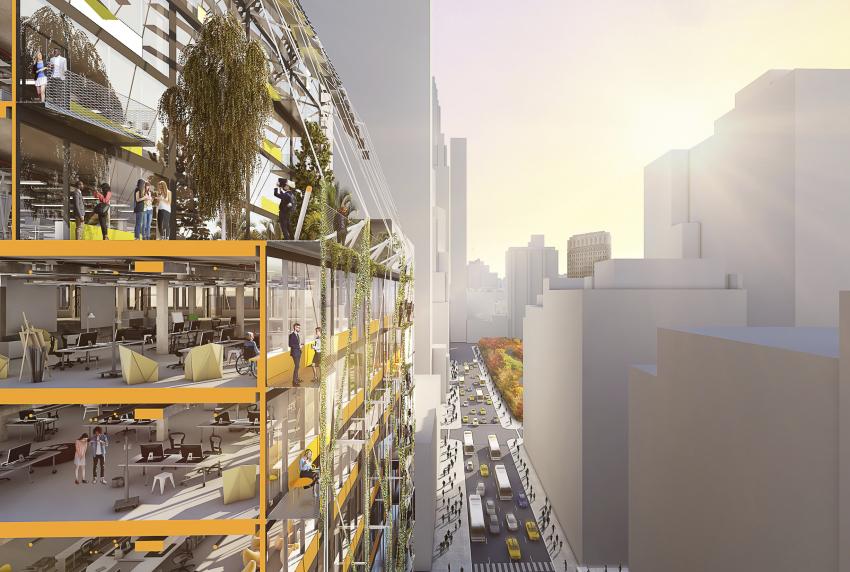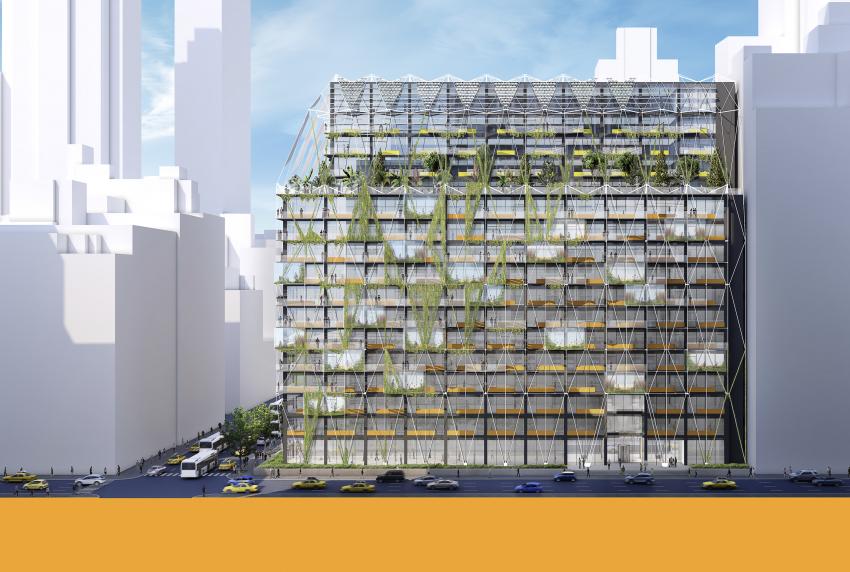WilkinsonEyre/Eckersley O’Callaghan/Gartner
New York, NY
United States
WilkinsonEyre, Eckersley O’Callaghan and Gartner, rise to the challenge of carbon neutrality
WilkinsonEyre is delighted to have received first prize in the international ‘Metals in Construction’ magazine 2020 Design Challenge in a team including façade consultants Eckersley O'Callaghan, façade contractor Gartner, MRG Studio and Level Infrastructure.
The international ideas competition invited design proposals to upgrade an aging, energy-inefficient high-rise office building at 63 Madison Avenue to comply with New York City’s Green New Deal goals, and to create a more desirable space for companies competing for highly skilled employees. The challenge addresses how to transform NYC's high-rise office buildings, most of which are now more than a half a century old, but will still be standing in 2030, a milestone year on the city's roadmap to carbon neutrality. The brief was to use a cladding solution to halve the building's energy consumption, bring daylight deeper into the building and give better access to the outside.
The WilkinsonEyre scheme, called Second Skin, employed the concept of an 'adaptive net' facade; creating a habitable area within a highly efficient, simple, regular cladding system. The ‘adaptive net’ allowed the practice to respond to the specifics of the building's locale; protect against seasonal environmental conditions; optimise views and introduce natural greening, all of these enhancing occupants' wellness.
A system of external shading/reflector devices was developed to provide shade, reduce glare, increasing the quality of daylighting and improving the usable area by 20%, whilst preserving views out. The engineers demonstrated through thermal modelling that this concept (combined with an improvement in the efficiency of M&E equipment), would offer a 50% reduction in carbon emissions as well as offer an embodied carbon offset after only four years. The proposed planting and vegetation will respond to light, heat, humidity and seasonal variations, and the baseline palette will be chosen to increase biodiversity and ecological resilience.
The team was commended for a solution that was simple - with applicability to a wide range of buildings - cost effective, and adaptive, so it can be tailored to suit different environments and orientations.
The site and building were chosen because of being typical of a large swathe of American real estate of a similar type and period, meaning the winning solution has great potential replicability across the USA.
Explore the TenderStream archive here
Start your free trial here or email our team directly at customerservices@tenderstream.com




